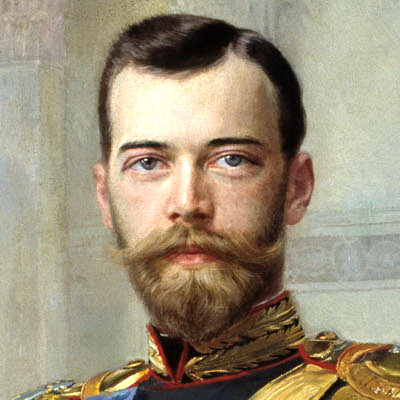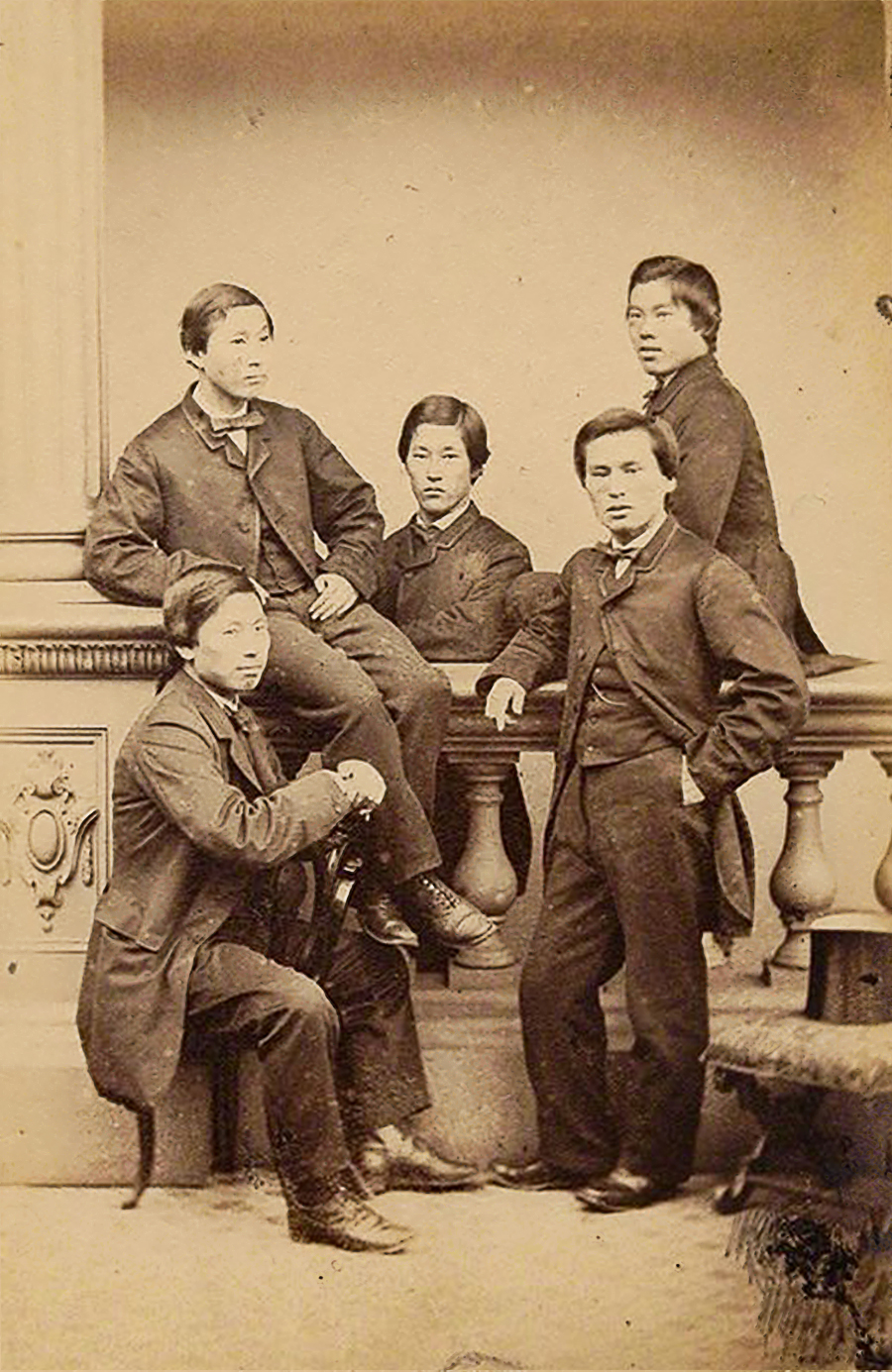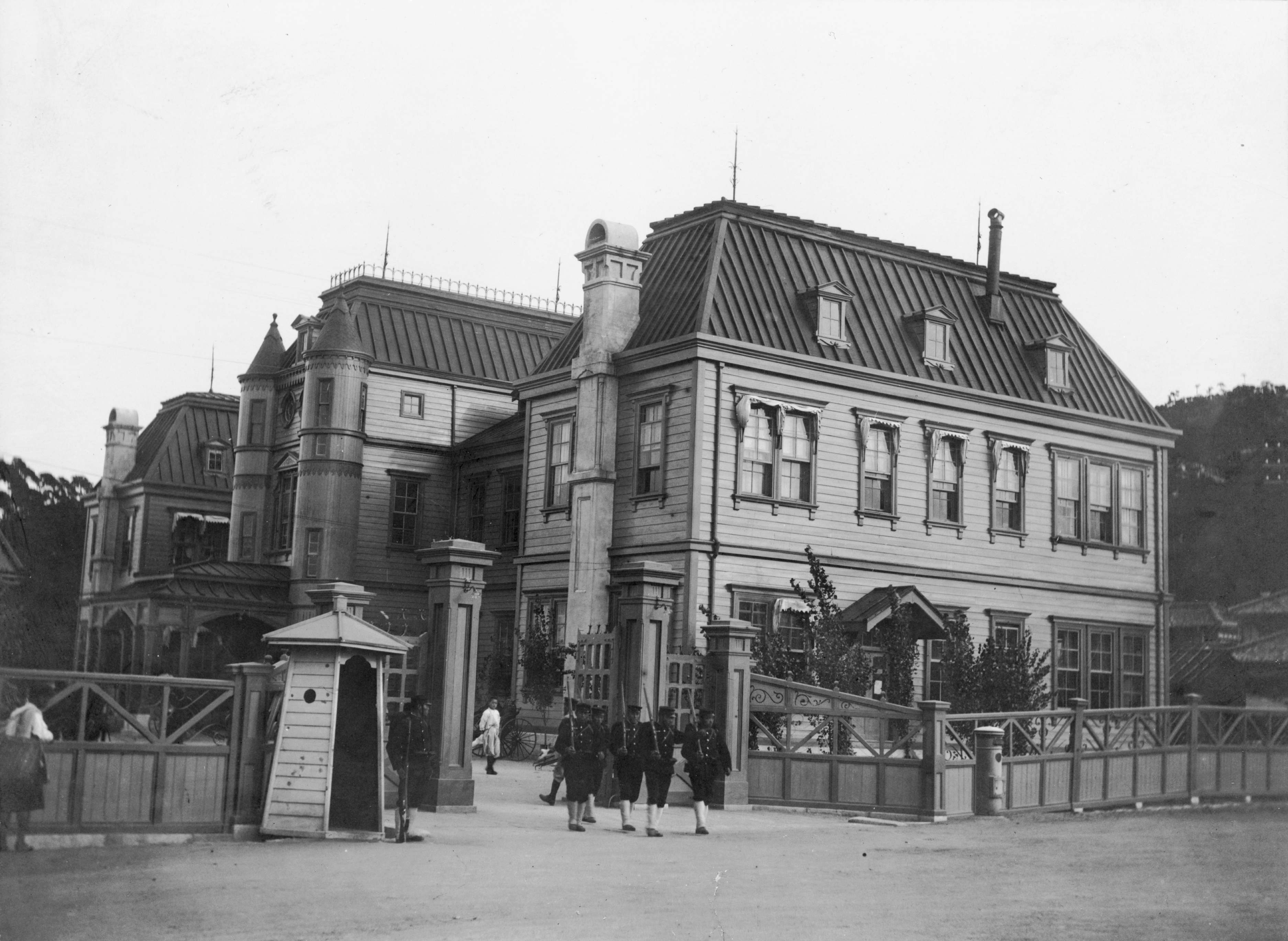|
Lee Wan Yong
Yi Wanyong (; 17 July 1858 – 12 February 1926), also spelled Lee Wan-yong or Ye Wan-yong, was a Korean politician who served as the 7th Prime Minister of Korea. He is best remembered for signing the Eulsa Treaty and the Japan–Korea Annexation Treaty, which placed Korea under Japanese rule in 1910. Yi's name has since become a byword for Korean collaborators with Imperial Japan. Early life and education Yi Wanyong was born into the Ubong Yi clan () to a poor aristocratic family in 1858, but grew up with a lot of support after he became the adoptive son of Yi Ho-jun, who was a friend of Heungseon Daewongun and an in-law. He learned English and theology at Yookyoung Park, went to the United States to live as a diplomat, and returned to Korea to serve as a pro-Russian politician until the 1896 Agwan Pacheon incident, where King Gojong and his crown prince took refuge at the Russian legation in Seoul. As Japan grew stronger, he became a pro-Japanese politician. Yi wa ... [...More Info...] [...Related Items...] OR: [Wikipedia] [Google] [Baidu] |
Pak Che-soon
Pak Chesun (; 7 December 1858 – 20 June 1916) was a Korean politician and diplomat during the late Joseon period. His art name was P'yŏngjae ().Pak Chesun In modern South Korea, he is regarded as one of the Five Eulsa Traitors who betrayed the country into Japanese domination in 1905. Biography Pak was born in Yongin, outside Seoul where his father was a minor government official and supporter of Kim Yun-sik (1835), Kim Yunsik. His family's clan name is . In 1883, after passing the Gwageo, Korean Imperial Examination, he was sent to Tianjin. On October 9, 1898, he was promoted to the post of Foreign Minister, and it was in this capacity that he signed the Japan–Korea Treaty of 1905 (also known as the "Eulsa Treaty"), which effectively deprived Korea of its diplomatic sovereignty and m ...[...More Info...] [...Related Items...] OR: [Wikipedia] [Google] [Baidu] |
Korean Empire
The Korean Empire, officially the Empire of Korea or Imperial Korea, was a Korean monarchical state proclaimed in October 1897 by King Gojong of the Joseon dynasty. The empire lasted until the Japanese annexation of Korea in August 1910. During this period, Emperor Gojong oversaw the Gwangmu Reform, a partial modernization and westernization of Korea's military, economy, land system, education system, and various industries. In 1905, the Korean Empire became a protectorate of the Empire of Japan. After the Japanese annexation in 1910, the Korean Empire ceased to exist. History Formation Resistance against Korea having a tributary relationship with China increased in the 17th century. As the Ming dynasty was replaced by Qing dynasty, Western ideas entering Korea had caused anti-tributary sentiments to rise in Korea. Moreover, after the opening of Korea, members of the Gaehwa Party often declared independence from China, but China increased its interference in Korean aff ... [...More Info...] [...Related Items...] OR: [Wikipedia] [Google] [Baidu] |
Leopold II Of Belgium
Leopold II (9 April 1835 – 17 December 1909) was the second king of the Belgians from 1865 to 1909, and the founder and sole owner of the Congo Free State from 1885 to 1908. Born in Brussels as the second but eldest-surviving son of King Leopold I and Louise of Orléans, Queen Louise, Leopold succeeded his father to the Belgian throne in 1865 and reigned for 44 years until his death, the longest reign of a Belgian monarch to date. He died without surviving legitimate sons; the current king of the Belgians, Philippe of Belgium, Philippe, descends from his nephew and successor, Albert I of Belgium, Albert I. He is popularly referred to as the Builder King (, ) in Belgium in reference to the great number of buildings, urban projects and public works he commissioned. Leopold was the founder and sole owner of the Congo Free State, a private colonial project undertaken on his own behalf as a personal union with Belgium. He used Henry Morton Stanley to help him lay claim to the Cong ... [...More Info...] [...Related Items...] OR: [Wikipedia] [Google] [Baidu] |
Myeongdong Cathedral
The Cathedral Church of Our Lady of the Immaculate Conception (; ), informally known as Myeongdong Cathedral (), is the national cathedral of the Archdiocese of Seoul. Located in the Myeongdong neighbourhood of Jung District, Seoul, South Korea, it is the cathedra, seat of the Archbishop of Seoul, Peter Chung Soon-taick. The shrine is dedicated to the Blessed Virgin Mary as the Immaculate Conception honored as the principal Patroness of Korea by a pontifical decree accorded by Pope Gregory XVI in 1841. The cathedral serves as a community landmark, tourist attraction, and a notable symbol of Catholic Church in Korea. The Government of South Korea, South Korean government declared the cathedral as a Historic Sites of South Korea, historic site (No. # 258) on 22 November 1977. History Christianity was heavily persecuted during the Joseon period. Still, interest in it grew as an academic novelty, notably among members of the Silhak (실학; "practical learning") school, attracted t ... [...More Info...] [...Related Items...] OR: [Wikipedia] [Google] [Baidu] |
Japan–Korea Treaty Of 1907
The Japan–Korea Treaty of 1907 was made between the Empire of Japan and the Korean Empire in 1907. Negotiations were concluded on July 24, 1907.Korean Mission to the Conference on the Limitation of Armament, Washington, D.C., 1921-1922. (1922). ; excerpt, "Alleged Treaty, dated July 24, 1907." Treaty provisions The treaty provided that Korea should act under the guidance of a Japanese resident general. The effect of the treaty's provisions was that the administration of internal affairs was turned over to Japan. The Korean Empire had become a protectorate of Japan under the terms of the earlier Eulsa Treaty on 1905, and had thus lost the right to conduct diplomatic exchanges with other countries. Korean Emperor Gojong sent an envoy in secret to the Hague Conference on World Peace to protest Japan's actions. In retaliation, on July 18, 1907, Japan made Emperor Gojong abdicate in favor of his son Sunjong. Six days later, a new agreement was forced on the Korean government. ... [...More Info...] [...Related Items...] OR: [Wikipedia] [Google] [Baidu] |
Hague Peace Conference
The Hague Conventions of 1899 and 1907 are a series of international treaties and declarations negotiated at two international peace conferences at The Hague in the Netherlands. Along with the Geneva Conventions, the Hague Conventions were among the first formal statements of the laws of war and war crimes in the body of secular international law. A third conference was planned for 1914 and later rescheduled for 1915, but it did not take place because of the start of World War I. History The Hague Conventions of 1899 and 1907 were the first multilateral treaties that addressed the conduct of warfare and were largely based on the Lieber Code, which was signed and issued by US President Abraham Lincoln to the Union Forces of the United States on 24 April 1863, during the American Civil War. The Lieber Code was the first official comprehensive codified law that set out regulations for behavior in times of martial law; protection of civilians and civilian property and punishment o ... [...More Info...] [...Related Items...] OR: [Wikipedia] [Google] [Baidu] |
Itō Hirobumi
Kazoku, Prince , born , was a Japanese statesman who served as the first prime minister of Japan from 1885 to 1888, and later from 1892 to 1896, in 1898, and from 1900 to 1901. He was a leading member of the ''genrō'', a group of senior statesmen that dictated policy during the Meiji era. Born into a poor farming family in the Chōshū Domain, Itō and his father were adopted into a low-ranking samurai family. After the opening of Japan in 1854, he joined the nationalist ''sonnō jōi'' movement before being sent to England to study at University College London in 1863. Following the Meiji Restoration of 1868, Itō was appointed the junior councilor for foreign affairs in the newly formed Empire of Japan. In 1870, he traveled to the United States to study Western currency, and subsequently helped establish Japan's taxation system in 1871. Itō then set off on another overseas trip with the Iwakura Mission to the U.S. and Europe. Upon his return to Japan in 1873, he became a f ... [...More Info...] [...Related Items...] OR: [Wikipedia] [Google] [Baidu] |
Resident-General Of Korea
The Japanese resident-general of Korea (; ) was a post overseeing the Japanese protectorate of Korea from 1905 to 1910. List of Japanese residents-general See also * Governor-General of Korea * Governor-General of Taiwan The governor-general of Taiwan (, shinjitai: ) was the head of the Government-General of Taiwan in the Japanese era (including Formosa and the Pescadores) when they were part of the Empire of Japan, from 1895 to 1945. The Japanese governors- ... References {{Japan-hist-stub ... [...More Info...] [...Related Items...] OR: [Wikipedia] [Google] [Baidu] |
Five Eulsa Traitors
The Five Eulsa Traitors () refers to the five officials serving under Emperor Gojong of Korea, Gojong who signed the Japan–Korea Treaty of 1905, which is also referred to as the Eulsa Treaty. The treaty made Korea a protectorate of Empire of Japan, Japan. The five officials were Education Minister Lee Wan-yong, Army Minister Yi Geun-taek, Interior Minister , Foreign Affairs Minister Pak Chesoon, and Agriculture, Commerce, and Industry Minister Gwon Jung-hyeon (politician), Gwon Jung-hyeon. Initially, all of the ministers were against signing the treaty. Pak Chesoon even declared that he would rather commit suicide if Japan forced him to sign the treaty. However, under threat of execution, five of the ministers signed the treaty. Lee Wan-yong, Yi Ji-yong, and Gwon Jung-hyeon were the first to change their stance. List of Prime Ministers of Korea, Prime Minister Han Kyu-seol, the ministers of finance and justice, and Emperor of Korea, Emperor Gojong of Korea, Gojong refused to sig ... [...More Info...] [...Related Items...] OR: [Wikipedia] [Google] [Baidu] |
Gwon Jung-hyeon (politician)
Gwon Jung-hyeon ( November 27, 1854 – March 19, 1934), also spelled Kwon Jung-hyun, was an Imperial Korean Lieutenant General and Politician. He was the Minister of Justice from 1899 to 1910 and the Minister of Agriculture, Commerce and Industry from 1905 to 1910. He is best known for being one of the Five Eulsa Traitors who signed the Eulsa Treaty of 1905 which made the Korean Empire a protectorate of the Empire of Japan. Because of his involvement in the Treaty, he was an unpopular figure in Korea and faced an assassination attempt in 1907 by an assassination group led by . Biography Gwon was born on November 27, 1854, at Yeongdong County, Yeongdong. Having learned Japanese from an early age, he joined the Gaehwa Party which was a pro-Japanese political party. In 1883, he became the secretary of the Toei Supervisory Office, and then the secretary in Japan. In 1891 he became the Customs Officer at Incheon and was involved in the signing of the Austria–Korea Treaty of 1892 w ... [...More Info...] [...Related Items...] OR: [Wikipedia] [Google] [Baidu] |
Yi Geun-taek
Yi Geun-taek (; 30 September 1865 – 16 December 1919) was an official of Korean Empire who signed the Japan-Korea Treaty of 1905 as Minister of Military and became one of the Five Eulsa Traitors. He later became viscount after annexation of Korea. Biography Yi was born on 30 September 1865. From 1872, Yi was home schooled. When Empress Myeongseong refuged to Cheongju because of Imo Incident, Yi was known and after the incident he went to Seoul and passed military examination of Gwageo. After the Gojong's internal exile to the Russian legation, Yi was appointed as battalion leader of 3rd Qinwi battalion. For merit of dismissal of the Independence Club in October 1898, Yi was appointed as mayor of Seoul, Chief of Police. Later, Yi was Observer of North Hamgyong Province, member of Jungchuwon, and staff of Gyeongbu. In October 1901, Yi was appointed as Major General and commander of military police. In March 1902, Yi was the acting chief of Pyeongriwon. On 25 August 1902, Yi beca ... [...More Info...] [...Related Items...] OR: [Wikipedia] [Google] [Baidu] |
Emperor Gojong Of Korea
Gojong (; 8 September 1852 – 21 January 1919), personal name Yi Myeongbok (), later Yi Hui (), also known as the Gwangmu Emperor (), was the penultimate Korean monarch. He ruled Korea for 43 years, from 1864 to 1907, first as the last king of Joseon, and then as the first emperor of the Korean Empire from 1897 until his forced abdication in 1907. His wife, Queen Min (posthumously honored as Empress Myeongseong), played an active role in politics until her assassination carried out by the Japanese. Gojong oversaw the bulk of the Korean monarchy's final years. He was born into the ruling House of Yi, and was first crowned on 13 December 1863 at the age of twelve. His biological father, Grand Internal Prince Heungseon (widely known as Heungseon Daewongun), acted as regent until he reached the age of majority, although he continued holding power until 1874. At this time, Korea was under policies of strict isolationism. By contrast, Japan had been rapidly modernizing under the ... [...More Info...] [...Related Items...] OR: [Wikipedia] [Google] [Baidu] |






